Hyperpigmentation—those stubborn dark patches that appear on your skin—can be frustrating to treat effectively. Sun exposure, hormonal changes, and skin inflammation all contribute to these spots forming when melanin production goes into overdrive.
Red light therapy uses specific wavelengths of light to target cells deep within the skin, potentially helping to regulate melanin production and reduce inflammation that worsens discoloration.
Unlike harsh chemical treatments or invasive procedures, red light therapy works gently by enhancing cellular function and supporting the skin's natural healing processes. Evidence suggests red light therapy might gradually fade dark spots for many users, though results vary based on the type and severity of hyperpigmentation.

What Is Hyperpigmentation and Why Does It Happen?
Hyperpigmentation appears as darkened patches or spots on the skin that differ from your natural skin tone. These dark areas form when skin cells produce too much melanin, the natural pigment that gives skin its color. Hyperpigmentation can affect people of all skin types and tones, though it often appears more noticeable in those with deeper skin tones. The dark spots can vary in size, shape, and color intensity, ranging from light brown to black, depending on how much excess melanin accumulates in the affected areas.
Sun Exposure Causes Most Dark Spots On Skin
Ultraviolet (UV) rays from the sun trigger melanin production as your skin's natural defense mechanism. Prolonged or unprotected sun exposure stimulates melanocytes (pigment-producing cells) to create excess melanin, resulting in sunspots or solar lentigines. These typically appear on areas most exposed to the sun, such as the face, hands, arms, and shoulders.
Pregnancy And Birth Control Pills Can Cause Brown Patches
Hormonal fluctuations can activate melanin production and cause melasma, characterized by symmetrical brown or grayish-brown patches. Pregnancy ("mask of pregnancy"), birth control pills, and hormone replacement therapy often trigger melasma due to increased estrogen and progesterone levels. These patches commonly appear on the cheeks, forehead, nose, and upper lip, and may worsen with sun exposure.
Acne And Skin Injuries Often Leave Dark Marks Behind
Skin inflammation or injury can lead to post-inflammatory hyperpigmentation (PIH) as part of the healing process. Acne breakouts, eczema flare-ups, psoriasis, or any skin trauma like cuts, burns, or aggressive skincare treatments can cause PIH. The inflammation signals melanocytes to produce more melanin, leaving behind dark marks after the initial condition heals.
Dark Skin Gets Dark Spots More Easily
People with medium to dark skin tones have more active melanocytes and naturally higher melanin levels. This makes darker skin tones more prone to developing hyperpigmentation when triggered by external factors. Genetic predisposition also plays a significant role in how your skin responds to triggers and how long hyperpigmentation may last.
Years Of Sunlight Create Brown Spots As You Age
As skin ages, years of sun exposure can lead to the development of age spots or liver spots. These flat, brown spots typically appear after age 50 on sun-exposed areas. The cumulative effect of UV damage over time causes melanin to concentrate in certain areas, creating these permanent dark spots.
What Is Red Light Therapy?
Red Light Therapy (RLT) uses specific wavelengths of light to treat skin concerns without drugs, chemicals, or invasive procedures. This treatment delivers red and near-infrared light directly to your skin, where it penetrates beneath the surface to reach cells without causing damage or discomfort.
How Red Light Therapy Works
Red light devices emit wavelengths typically between 630-700 nanometers (red light) and 700-940 nanometers (near-infrared light). These specific wavelengths can penetrate skin at different depths:
- 630-660 nm (visible red light): Penetrates the skin's surface layers
- 800-940 nm (near-infrared): Reaches deeper tissues beneath the skin
The light energy is absorbed by cells, particularly by the mitochondria, often called the "powerhouse" of the cell. This absorption stimulates energy production and activates various biological processes that may help repair and regenerate skin.
Types of Red Light Devices
Red light therapy comes in various forms to suit different needs and budgets:
- Professional devices: Used in dermatologist offices and medical spas
- Full-body panels: Larger units for treating extensive areas
- Handheld devices: Smaller, portable options for targeted treatment
- Masks and wands: Consumer-friendly options for at-home facial treatments
Most devices use LED (Light Emitting Diode) technology to produce the specific wavelengths needed for treatment. Unlike many conventional treatments for hyperpigmentation, red light therapy generally doesn't cause skin peeling, redness, or increased sun sensitivity. This makes it particularly appealing for people with sensitive skin or those who cannot tolerate more aggressive treatments.
Does Red Light Therapy Work for Dark Spots?
Yes, red light therapy does work for dark spots, with good scientific evidence backing it up. In one study of 90 patients who received 8 LED red-light treatments over 4 weeks, more than 90% reported noticeable improvements, including lightening of dark spots and smoother skin texture. While results vary from person to person, this therapy works best when used consistently and as part of a complete skincare approach rather than as a standalone solution for significant hyperpigmentation.
Realistic Results Timeline
Most people follow this general improvement pattern:
- 2-4 weeks: Improved skin texture and tone, subtle brightening
- 4-8 weeks: Beginning fading of newer or milder dark spots
- 8-12 weeks: More noticeable reduction in hyperpigmentation
- 12+ weeks: Maximum benefits for stubborn or deeper pigmentation
Factors Affecting Your Results
Your outcomes will vary based on several key factors:
- Hyperpigmentation type: Post-inflammatory responds better than melasma
- Pigment depth: Surface discoloration fades faster than deep pigmentation
- Skin tone: All skin types can benefit, though results may take longer in darker skin
- Dark spot age: Newer spots (less than 6 months old) typically respond better
- Treatment consistency: Missing sessions significantly reduce effectiveness
Remember that no single treatment completely eliminates stubborn hyperpigmentation. Red light therapy provides a safe, non-invasive option that complements other approaches while delivering additional skin health benefits beyond pigmentation reduction.

How Does Red Light Therapy Work on Skin Cells?
As we spoke about, red light therapy involves the absorption of specific wavelengths into your skin cells. It is this absorption at the cellular level that makes red light such an exciting prospect for the treatment of hyperpigmentation. Red and near-infrared light, when absorbed into the skin, stimulates a cascade of cellular responses that can potentially regulate the production of melanin and improve the overall look of the skin.
Light Absorption in Skin Cells
Red light wavelengths are absorbed by chromophores, which are light-sensitive molecular parts of cells. Cytochrome c oxidase is the primary chromophore found in skin cells, within the mitochondria. This absorption takes place in various skin cells, including melanocytes (pigment-producing cells), fibroblasts (collagen-producing cells), and keratinocytes (the most common skin cell).
Boosting Cellular Energy Production
Once absorbed by the mitochondria, red light stimulates the production of adenosine triphosphate (ATP), which is the energy currency of cells. With increased cellular energy, the cells of the skin can function more efficiently. More ATP can help skin cells repair themselves and normalize abnormal processes, such as excessive melanin production, leading to dark spots.
Direct Effects on Melanocytes
Red light therapy may directly influence the melanocytes that produce the pigment responsible for hyperpigmentation. The light energy might help:
- Regulate tyrosinase activity (the enzyme that controls melanin synthesis)
- Normalize overactive melanocytes that produce excess pigment
- Promote the breakdown and removal of existing excess melanin
Promoting Healthy Cell Turnover
Red light therapy appears to accelerate the natural process of skin cell turnover. This enables your body to shed melanin-containing cells at a quicker pace. Faster elimination of melanocyte-stimulating cells from the skin surface translates into quicker elimination of hyperpigmented spots than through natural means alone.
DNA Repair and Protective Functions
Red light wavelength exposure can activate the skin's intrinsic DNA repair mechanism. This is significant because UV-induced DNA damage is one of the leading causes of hyperpigmentation. Red light treatment may stop new dark spots from forming and also cure existing spots by stimulating repair processes.
How Red Light Therapy Controls Melanin
Red light therapy can help control melanin, the pigment responsible for dark spots on the skin. It aids in bringing melanin production back to normal levels, making it a promising way to treat hyperpigmentation.
- How Red Light Helps Enzymes: Melanin is synthesized under enzyme control, specifically tyrosinase. Red light may change the activity of the enzyme to prevent the development of excess melanin. Red light has been reported to normalize the stimuli that activate tyrosinase in generating color in the skin and bring it more in balance.
- Helping Clear Old Dark Spots: Along with inhibiting new melanin, red light treatment also breaks down already stored melanin in dark marks. Red light delivers energy to cells in the skin so that specialized cells can wash away unwanted pigment.
- Making Skin Tone Even: How melanin is dispersed in the skin is a strong determinant of how dark spots occur. Red light therapy is capable of increasing how melanin is distributed from pigment cells to other cells in the skin so that it is more evenly dispersed.
- Calming Pigment Cells: Often, highly activated pigment-producing cells, melanocytes, are at fault for uncooperative dark spots. Red light calms down such cells and brings their normal functioning back. Calming the cells can be immensely helpful in the treatment of conditions like melasma, where such cells become hyper-responsive to stimuli like hormones.
- Keeping Skin's Natural Protection: Not all melanin is bad; it protects skin from sun damage and pigments it. Red light therapy does not entirely stop melanin production. Instead, it makes sure it is regulated properly.
- How It Helps Different Dark Spots: Red light therapy has been discovered through studies to potentially respond differently to various kinds of dark spots. It typically responds well to dark spots caused by inflammation because red light also counteracts inflammation. Sun spots may heal better and improve because cells heal better. Hormone-induced melasma is harder to treat, but it may still get better through the red light's ability to normalize melanocytes.
How Does Red Light Therapy Reduce Inflammation and Dark Spots?
When your skin becomes inflamed because of acne, injuries, or irritation, the inflammation stimulates pigment-producing cells to produce too much melanin, which leaves behind dark spots after the underlying problem has healed. Red light therapy targets this inflammation directly and can even prevent new dark marks from emerging, as well as fade old ones.
Breaking the Inflammation-Pigmentation Cycle
Dark spots and inflammation create a vicious cycle—inflammation triggers pigment, and those dark spots sometimes cause more inflammation. Red light therapy stops this cycle by:
- Reducing inflammatory molecules called cytokines that signal melanin production
- Decreasing levels of TNF-α and IL-6 (inflammation-promoting substances)
- Calming the skin's inflammatory response at its source
Studies show these specific wavelengths of light penetrate the skin and help normalize the cellular processes that connect inflammation to pigmentation.
Speeding Up Healing After Skin Damage
The faster your skin heals, the less time pigment has to accumulate. Red light therapy accelerates recovery by:
- Boosting cellular energy for faster repair processes
- Increasing circulation to damaged areas
- Supporting new cell growth to replace damaged tissue
This shortened healing phase gives pigment cells less opportunity to overproduce melanin, potentially making dark spots less severe after acne, burns, or cosmetic procedures.
Reducing Redness Before It Becomes Brown
That initial red mark often turns into a brown spot if left untreated. Red light therapy works to:
- Constrict dilated blood vessels that cause redness
- Reduce the heat in irritated skin
- Calm irritated cells before they trigger pigment production
By addressing inflammation early, red light therapy may prevent the dark spots that would typically follow as redness fades.
Helping Existing Dark Spots Fade Faster
For dark spots you already have, red light therapy supports fading by:
- Normalizing cell turnover to shed pigmented cells faster
- Supporting circulation to help clear pigment
- Restoring normal function to previously inflamed skin areas
Clinical studies show patients typically see gradual improvement with regular sessions (2-3 times weekly for 4-8 weeks).
Treating Acne and Its Dark Aftermath
Acne is one of the most common causes of post-inflammatory dark spots, especially in darker skin tones. Red light therapy:
- Reduces P. acnes bacteria responsible for breakouts
- Decreases in oil production contribute to acne
- Calms active inflammation in existing pimples
- Lowers the risk of dark spots forming after acne heals
Research published in the Journal of Dermatological Treatment found red light therapy reduced both acne severity and subsequent hyperpigmentation in treated patients.
Gentle Option for Sensitive Skin
Unlike harsh chemical treatments that can worsen inflammation, red light therapy provides a non-irritating alternative that:
- Contains no chemicals that might trigger reactions
- Causes no burning or peeling
- Works without damaging the skin barrier
- Can be used on all skin types safely
This makes it especially valuable for sensitive skin that can't tolerate traditional treatments like retinoids, hydroquinone, or chemical peels.
How Does Red Light Therapy Boost Collagen and Improve Skin?
How the collagen-building process works: Red light therapy stimulates specialized cells called fibroblasts that produce collagen and elastin—the proteins responsible for skin strength and elasticity. When red and near-infrared wavelengths penetrate the skin, they energize these fibroblasts to increase production of new collagen fibers, essentially kickstarting your skin's natural rebuilding process. Research shows that regular red light treatments can increase collagen density by 25-30% in treated areas, helping to strengthen skin structure that weakens with age and sun damage.
This collagen-boosting effect creates several indirect benefits for hyperpigmentation:
- Improved skin quality surrounding dark spots makes them less noticeable
- Enhanced skin thickness provides a stronger, more even-toned background
- Increased cellular turnover helps your skin shed pigmented cells faster
- Better texture and tone create a smoother surface that doesn't highlight dark areas
- Refined skin appearance makes any remaining discoloration less prominent
Beyond addressing dark spots, the rejuvenating effects of red light therapy contribute to a more radiant complexion overall. Increased blood circulation brings oxygen and nutrients to skin cells while enhanced lymphatic activity helps remove waste products and toxins. These combined effects create a "glow" effect that many users notice even before significant pigment changes occur. Regular treatments typically result in smoother texture, reduced fine lines, smaller pore appearance, and improved skin tone, creating a more youthful canvas that makes any remaining hyperpigmentation less noticeable.
How Often Should You Use Red Light Therapy for Dark Spots?
Red light therapy requires consistency and patience to work on dark spots, unlike treatments with immediate results. Success depends on following the right protocol for your device. Professional treatments use higher energy and need fewer sessions (1-2 weekly), while at-home devices use lower energy, requiring more frequent use (3-7 times weekly). Most studies show results appear gradually over 8-12 weeks of regular use, matching how your skin naturally processes excess pigment.
Red Light Therapy Protocol Comparison Chart
| Treatment Type | Frequency | Session Duration | Total Treatment Period | Optimal Wavelengths |
| Professional LED Panels | 1-2 times weekly | 15-30 minutes | 8-12 weeks | 630-660nm (red)<br>830-940nm (near-infrared) |
| At-Home LED Masks | 3-5 times weekly | 10-20 minutes | 12-16 weeks | 630-650nm (red) |
| Handheld LED Devices | 3-7 times weekly | 3-5 minutes per area | 12-16 weeks | 630-660nm (red)<br>830-850nm (near-infrared) |
| Light Therapy Wands | Daily use | 1-3 minutes per area | 12-16 weeks | 620-660nm (red) |
How Often To Use Red Light Therapy
Using a red light is often more important than using it strongly. If you skip sessions, it will not work as well. Most people see better skin in 2 to 4 weeks. Dark spots usually start to fade after 4 to 8 weeks of using it regularly. Bad dark spots might need 3 to 6 months of steady use.
Simple Tips To Get Better Results
To get the most from your red light therapy treatments:
- Clean your skin thoroughly before each session to remove makeup, sunscreen, and skincare products that might block light penetration
- Position the device at the recommended distance from your skin (typically 6-12 inches for panels, direct contact for handheld devices)
- Protect your eyes with the provided goggles or by keeping your eyes closed during treatments
- Follow with hyperpigmentation-targeting ingredients like vitamin C, niacinamide, or alpha arbutin to enhance results
- Use sunscreen daily, as UV exposure can counteract the benefits of your treatments
Remember that individual results vary based on your skin type, the cause and severity of your hyperpigmentation, and your consistency with treatments. Documenting your progress with photos taken in the same lighting conditions can help you track subtle improvements over time.
Is Red Light Therapy Safe for All Skin Types?
Yes, red light therapy is safe for most skin types. It has a good safety record. Studies show it rarely causes problems. It does not hurt the skin or cause bad irritation. But some people need to be careful. Some people should talk to a doctor before they start. This includes people who are sensitive to light, take certain medicines, or have certain skin problems.
Key Safety Information for Red Light Therapy
- Mild side effects may include temporary redness, warmth, or tightness immediately after treatment, typically resolving within a few hours.
- Eye protection is essential during treatment to prevent potential damage to the retina from direct exposure to bright light.
- Pregnancy considerations warrant professional consultation, as there's limited research on red light therapy during pregnancy despite no known adverse effects.
- Photosensitizing medications can increase sensitivity to light therapies, including certain antibiotics (tetracyclines, fluoroquinolones), acne medications (isotretinoin), and some diuretics.
- Active skin infections or open wounds should be fully healed before using red light therapy on affected areas.
- Specific conditions requiring professional guidance include epilepsy (due to potential flashing lights), diabetes (due to altered healing responses), and any history of skin cancer.
- Tattoos in treatment areas may absorb light energy differently, potentially causing discomfort or uneven treatment results.
- Thyroid concerns should be discussed with a doctor, as some theoretical concerns exist about light therapy's effects on thyroid function.
- Device quality matters significantly for safety—FDA-cleared devices have undergone testing for both efficacy and safety standards.
- Overtreatment is possible with excessive session frequency or duration, potentially causing temporary skin irritation without additional benefits.
Always follow device-specific instructions precisely and start with shorter, less frequent sessions when beginning red light therapy. While serious side effects are rare, discontinue use and consult a healthcare provider if you experience unusual discomfort, persistent redness, or worsening of your skin condition following treatment.
Try Red Light Therapy For Your Dark Spots Today
Red light therapy does work for dark spots, though results appear gradually. It's gentle, painless, and works by regulating pigment production and reducing inflammation without damaging skin. Most people see fading after 8-12 weeks when used regularly. For best results, pair it with sunscreen and continue your regular skincare. If you want to treat hyperpigmentation without harsh chemicals or procedures, red light therapy offers an effective option for all skin types.



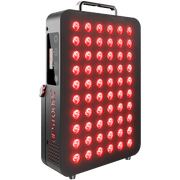







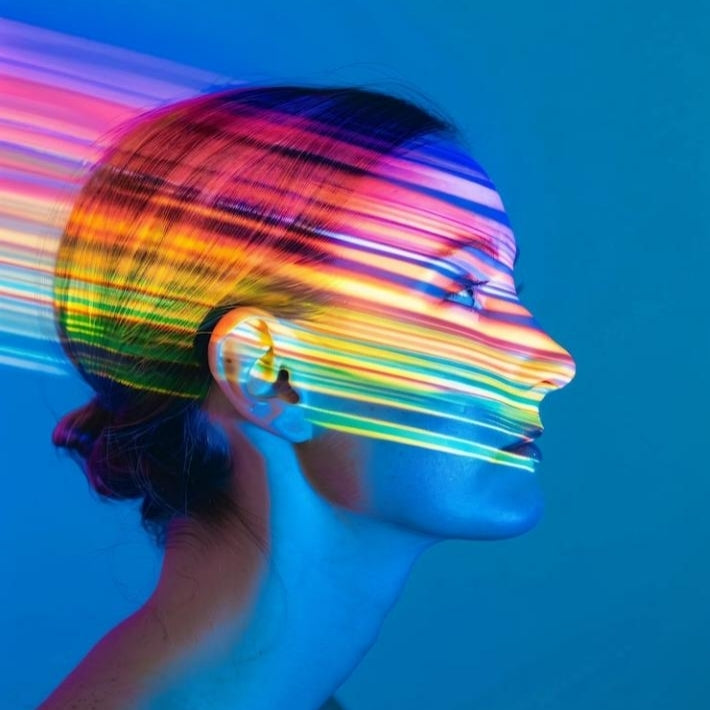

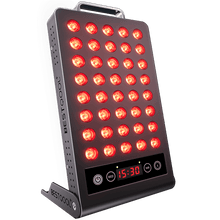
 Small
Small
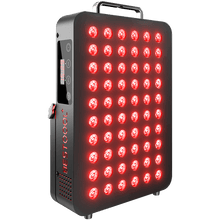
 Moderate
Moderate
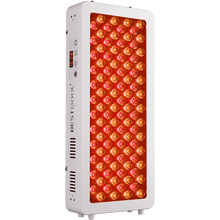
 Moderate
Moderate
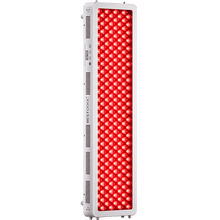
 Moderate
Moderate

 Full
Full



